
Democrats are good at proclaiming job 1 in 2020 is to defeat President Trump, but Democrats are bad at choosing the way to defeat President Trump. In fact when it comes to defeating President Trump, so far, most Democrats are playing with fires that could burn away any victory in 2020.

Democrats have to make sure that America understands they are not a Socialist Party
All Democrats are constantly criticizing President Trump for not reaching beyond his right-wing base of supporters. Based on the rhetoric from their first debates most Democrats are doing the same as President Trump, they are just doing it on the left side of the political spectrum by casting a left-only left-wing net. A left-wing net so left that it will burn Democrats and lead to certain 2020 general election defeat.
On the second night of the debates, all but two of the candidates said they supported a proposal to decriminalize unauthorized border crossings into the United States. This was in part a reaction to Julian Castro’s impassioned challenge to Beto O’Rourke, on the first night of the debates, to support decriminalization. Even though Castro saw a “2,000 percent increase” in his overnight fundraising and got a congratulatory text from fellow candidate Elizabeth Warren, Democrats are committing electoral suicide by backing any proposal to dumb down illegal immigration from a criminal to a civil offense.
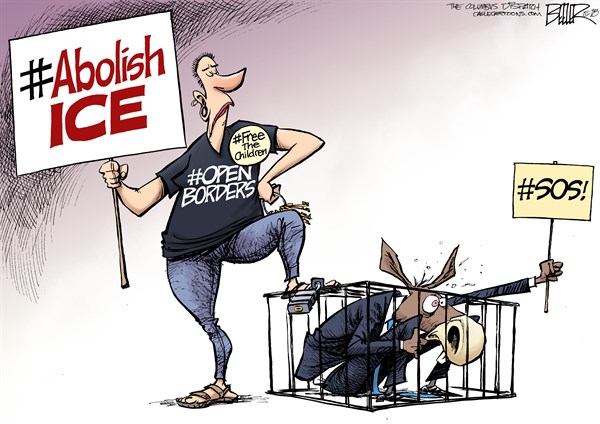
The Democratic Party must make sure that it’s left wing does not trap it to far to the LEFT
After a discussion on another fire trap, Medicare for All, that mirrored the first night’s debate with most of the Democratic candidates voicing near universal support for it, NBC moderator Savannah Guthrie posed this question: “A lot of you have been talking tonight about these government health care plans that you have proposed in one form or another, Raise your hand if your government plan would provide coverage for undocumented immigrants.” All 10 candidates raised their hand to say they would allow undocumented immigrants healthcare coverage.
A pledge by 2020 Democrats to implement any 1 of the following 3 policies:
1) Decriminalization of illegal immigration,
2) Medicare For All
3) Healthcare for undocumented immigrants
Means Democrats are lighting the torch of defeat in 2020.
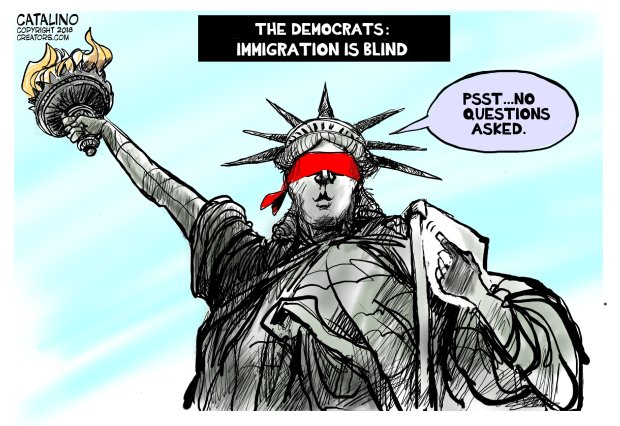
Any 2020 Democratic presidential candidate who supports decriminalizing illegal immigration, in other words “hey anybody just come in to America, no crime committed no questions asked” will burn to dust in a general election
Since the 2nd night of debates when all but 2 Democrats raised their hand, with Joe Biden raising a finger, in support of decriminalizing illegal border crossings, Biden claims now to be at odds with the majority of 2020 Democrats saying last Friday when asked if he supported it: “No, I don’t, I think people should have to get in line, but if people are coming because they’re actually seeking asylum, they should have a chance to make their case.”
Although Biden is at odds with his 2020 Democratic rivals he appears not to be at odds with the American people. A Gallop Poll taken last February asked what level of threat were large numbers of undocumented immigrants entering the United States, 47% said it was critical up from 39% in Feb 2018, 30% said it was important for a total of 77% who think it’s an important criminal issue, and only 22% said it was not important. The following March a Gallop Poll asked individuals “how much they personally were concerned about illegal immigration,” 36% said a great deal and 18% said a fair amount for a total of 54% that are concerned.
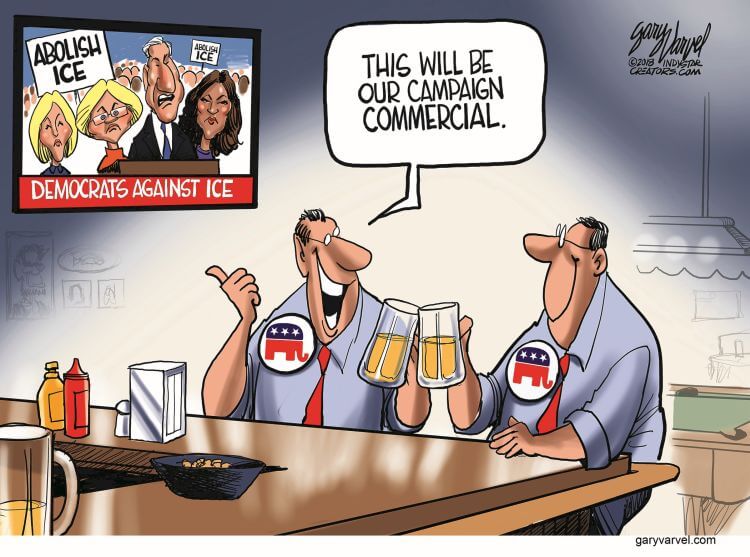
This is the exact scenario taking place in Trump Hotel bars across America as you are reading this caption
The 54% tracks with a POLITICO/Morning Consult Poll taken July 06-10, 2018 that asked: Do you believe that the federal government should keep or get rid of Immigration and Customs Enforcement (ICE)? 54% said keep ICE. The poll also asked: Would you be more or less likely to vote for a candidate for U.S. Congress if they supported getting rid of Immigration and Customs Enforcement (ICE), or would it make no difference either way? 30% said much less likely and 10% said somewhat less likely for a total of a 40% majority, only 17% said it made no difference and 26% said it made it more likely.
Even among themselves, Democrats are barely in step with each other on decriminalization. The POLITICO/Morning Consult poll shows only a small plurality of Democratic voters support abolishing ICE, 43% say the government should get rid of ICE, while 34% say it should keep ICE proving there is little support for the fire of decriminalization outside of the hard core Democratic base.
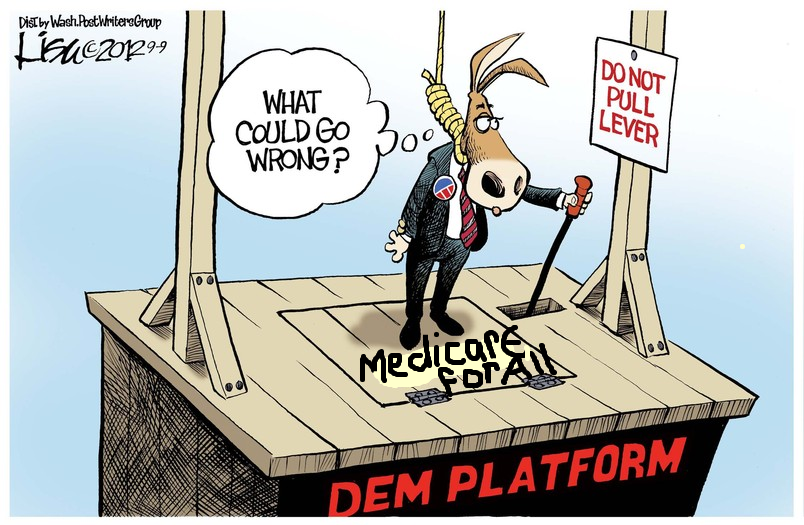
Election Day Nov 2020 will definitely go wrong for any Democratic nominee who pledges to convert America to Medicare-for-all
The 2nd fire most Democrats are playing foot loose and fancy free with is Medicare-For-All, a fire sure to burn Democrats to a crisp in 2020. Most 2020 Democrats are supporting Bernie Sanders’s Medicare for All expansion bill that would cover all Americans. If America were to convert to Sanders’ Medicare-For-All, people who currently get their private health insurance from their employers would move to the government system. The plan would provide fairly comprehensive coverage, as Medicare does now, all with no copays, premiums or deductibles. It would include inpatient and outpatient hospital care, emergency services, preventative services, most prescription drugs, dental and vision coverage, and long-term or nursing home care. The only potential for out-of-pocket fees would be for some prescription drugs and certain elective procedures.
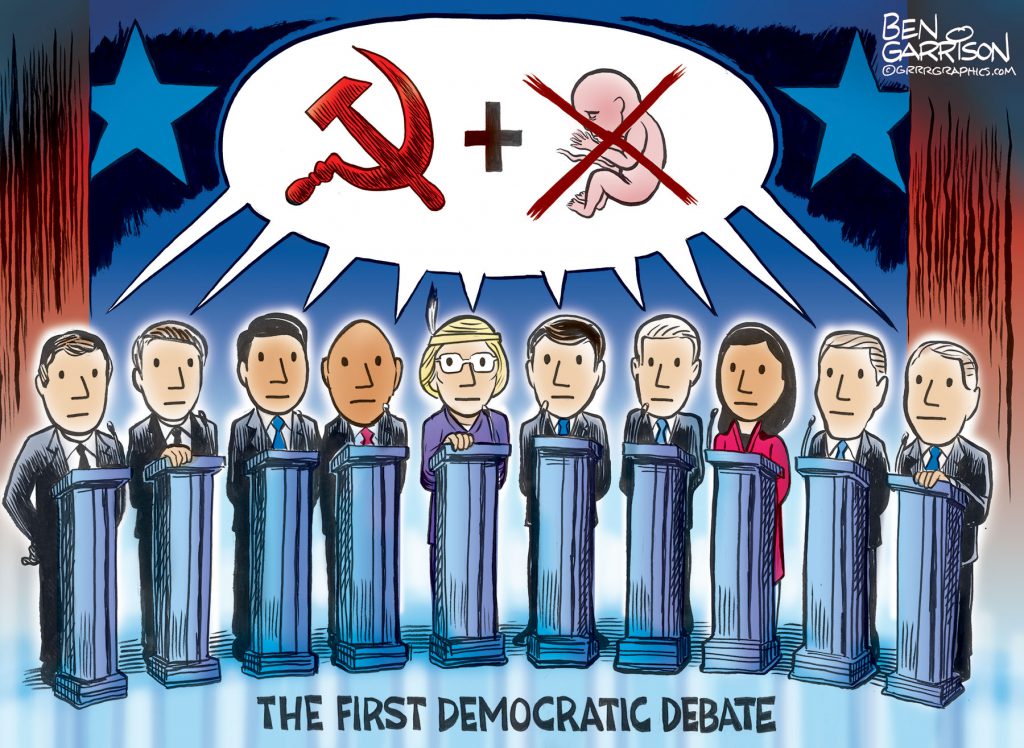
2020 Democrats have to make sure that they don’t give voters reasons to believe Republican propaganda
A Kaiser Family Foundation (KFF) Health Tracking Poll taken this past January details the hidden 2020 Medicare-for-all fire Democrats are throwing themselves into. When respondents were asked: Would you favor or oppose a national Medicare-for-all- plan if it would guarantee health insurance as a right for all Americans? 71% said they would favor it 27% said they would oppose it. When the same respondents were asked: Would you favor or oppose a national Medicare-for-all- plan if it would eliminate private health insurance companies? The 71% who said they favored Medicare-for-all dropped to 37% revealing the hidden fire. When the same respondents were asked: Would you favor or oppose a national Medicare-for-all- plan if it leads to delays in people getting some medical tests and non-emergency procedures? The 37% dropped 11 points to 26% revealing more hidden fire. In other words, the more specifics people find out about Medicare-for-all the more unpopular it becomes.

Ideally Medicare-for-all is a good thing and a worthy goal to pursue, but in reality it cannot work in a market driven economy
According to the same KFF poll, 51% of Democrats are for “improving and protecting” the Affordable Care Act (ACA) and only 38% favor a Medicare-for-all plan. Medicare-for-all 2020 Democrats are confusing the sentiment of Americans wanting all Americans to have access to affordable healthcare, with the actual fact of 150 million Americans not wanting to give up their own private health insurance to make that access happen. On Election Day in 2020, if it comes down to a choice, the private health insurance fact will win out over the access to affordable healthcare sentiment, regardless of how it impacts the reelection of President Trump.
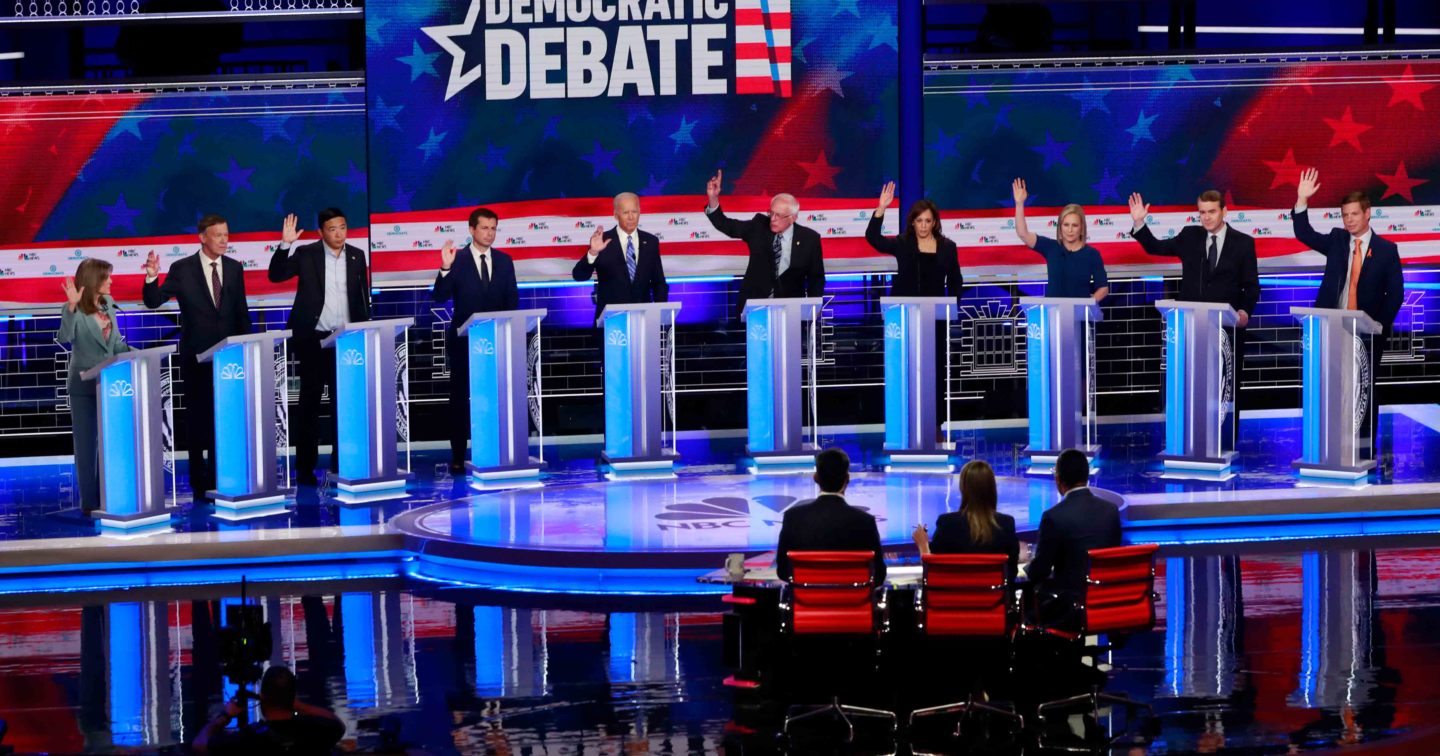
All 10 Democratic presidential candidates raised their hands Thursday night for 2 reasons 1) to indicate that they would provide health insurance for undocumented immigrants 2) to volunteer to be burned to a crisp in the 2020 general election for supporting healthcare for the undocumented. (Wilfredo Lee/AP)
Any 2020 Democrats supporting the 3rd fire of NON-EMERGENCY related healthcare for undocumented immigrants are 2020 Democrats who have voluntarily doused themselves in gasoline, and now are about to strike a match!!! Almost all of the 19 candidates who responded to a recent New York Times survey on health care positions said “yes” to a question about whether undocumented immigrants should be covered under a “Medicare-for- all” system, a public option or other government health programs. And during the second night of the Democratic debates when all but 2 candidates raised their hand for the decriminalization of illegal border crossings, healthcare for the undocumented received a unanimous show of hands in support.

Democratic presidential candidates all plan to give health care to illegal immigrants paid for by taxpayers. This could be good intentions with bad outcomes
President Trump tweeted that same night: “All Democrats just raised their hands for giving millions of illegal aliens unlimited healthcare, How about taking care of American Citizens first!? That’s the end of that race!” His tweet is in line with how most Americans view healthcare for the undocumented.
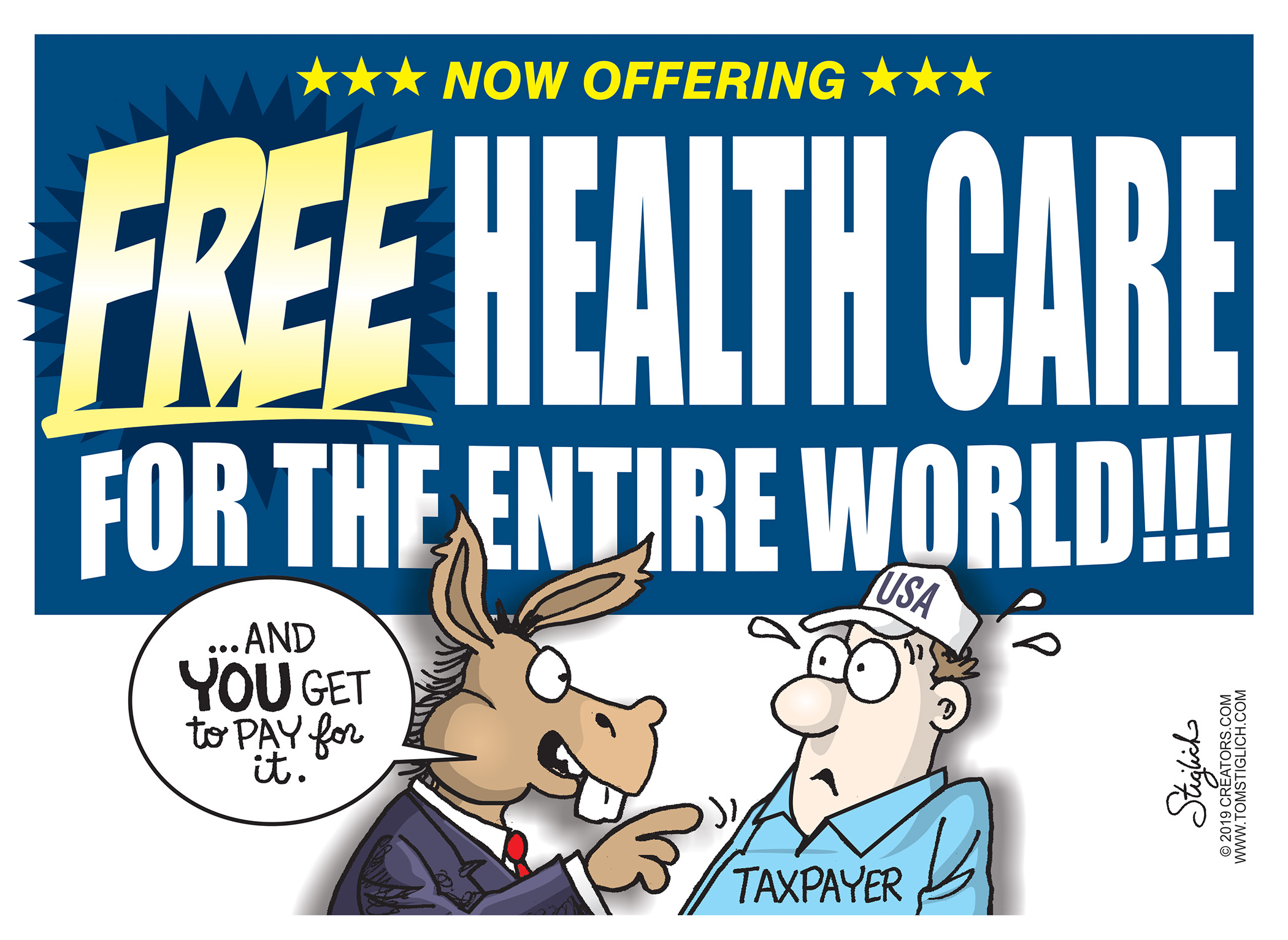
This is the message that most Americans fear would be conveyed by offering healthcare for the undocumented
A CNN Poll of 1,613 respondents taken following the Democratic debates revealed that 59% oppose making government health insurance programs available to illegal immigrants, 38% supported it, while 3% expressed no opinion. The 59% feel the same thing President Trump tweeted “how about taking care of the people who are here legally first, American citizens.”
Obamacare has enabled millions who did not have health insurance to get it for the first time but millions more still have remained uninsured, and there have been 102 rural hospitals across 27 states that have closed leaving millions more with no access to healthcare. It’s an insult to most Americans for 2020 Democrats to support healthcare for the undocumented when we have not figured out how to provide healthcare for all American citizens.
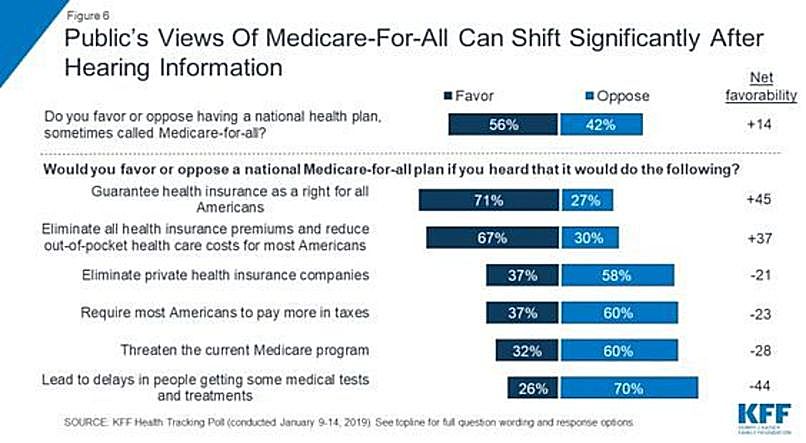
By the way, an undocumented person SHOULD NOT be granted ANYTHING in America!!! 911 taught us that as a matter of national security we need to know who is in the country, all immigrant policies need to be geared toward encouraging immigrants who are here to come forth out of the dark and identify themselves. Allowing undocumented immigrants access to anything in America while hiding in the shadows is antithetical to both sides of the argument in the recent Census case before the federal courts. Both sides made the case for accurately determining who is in the country, but the 2 sides differed on the methodology of how to get accurate information.
Some make the argument that allowing undocumented immigrants to buy into the health insurance market will help drive down health insurance cost. Even if this is true and undocumented immigrants buying health insurance brings the cost of insurance down by 50%, undocumented immigrants still need to be DOCUMENTED before they are allowed to buy health insurance.
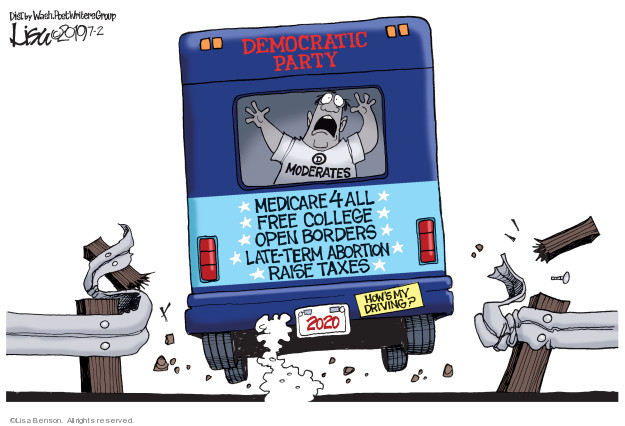
Democrats must not let their left wing drive the Democrat Party into the burning flames of 2020 general election defeat
If Democrats are serious about retaking the White House in 2020, they must stop playing with either of the 3 fires that might burn away their opponents in a Democratic primary, but will most definitely turn and burn them up on general election day!!!
